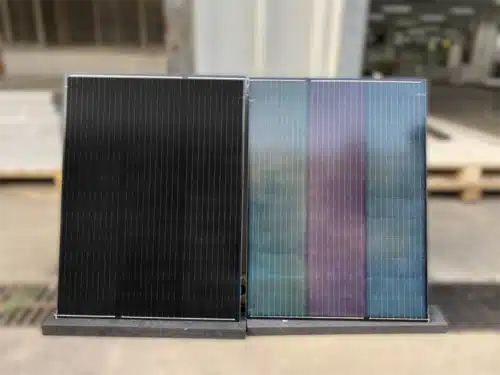Researchers develop a way of providing Photovoltaic cells colors using structured material that would be simple and inexpensive to apply and also maintain its ability to produce energy efficiently

Researchers sprayed a thin layer of material known as photonic glass upon the surface of solar panels. The thin layer consists of dielectric microscopic zinc sulfide spheres which are spread disorderly on the surface. As a massive amount of light was absorbed through thin glass, only selective colors were reflected based on the size of the spheres giving a precise color to the panel. This approach made the panels look blue, green, and purple only dropping the power generation efficiency from 22.6% to 21.5%. Researchers that are reporting in ACS Nano are said to have created panels that absorb colorful hues.
The photovoltaic panels have become essential for having sustainable cities. It is very difficult to build and integrate photovoltaic cells which will conserve energy and also look pleasing. Solar panels used for the absorption of light for the production of energy are of typical deep black color. The monotonous black color of solar panels makes the onlookers very underwhelmed. Hence, to make it attractive PV colorization technology was needed which will make PV look attractive without affecting its power conservation efficiency (PCE) and at a low cost. The technologies were implemented to make PVs colorful but were expensive when used for large-scale production.
Hence, this research shows that with varying microsphere sizes, solar cells of different colors are achieved. The stability is verified by performing tests on outdoor exposure for 10 days and also a damp-heat test for 1000h, with the output power of 108 W for the mass producibility of the colored PV panel. Overall, these colored PV panels show a promising strategy to produce high efficiency and practical applicability
Click here for the Published Research Paper






